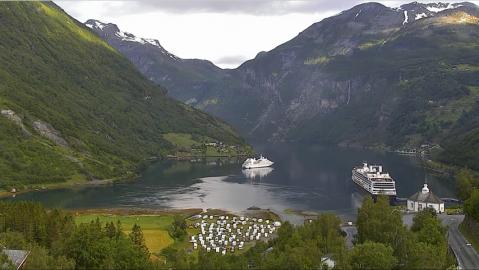Many tourists visit Lucerne each year. Switzerland has four official languages, so it ought to be no surprise that you can spell “Luzern” the German way, or the French way with a soft ‘c’: “Lucerne”.
Lucerne has a perfect situation on the lake where the River Reuss flows out, with Swiss Alps Mount Rigi and Mount Pilatus in the background.
The walled Old Town grew up on both sides of the river, with the enchanting Chapel Bridge, a wooden, roofed pedestrian bridge, linking the two banks. There are two other footbridges, one wooden and covered in, and the other modern, which allow pedestrians easy access to restaurants and bars on both banks of the river. In summer people head for the lake shore at lunchtime or after work, to cool off in the clear water or find shade under a beach umbrella: it can be hot in the city and many visitors will take a ride on a paddle steamer.
The Rosengart Collection, near the railway station, shows works by Picasso, Klee and other modern artists. The Culture and Convention Centre (KKL) is on the shore of Lake Luzern and was designed by French architect Jean Nouvel. It is used for 500 conferences and meetings in the fields of business, culture, science and education each year. The Bourbaki Panorama is a circular painting completed in 1881 by the painter Edouard Castres. It tells the story of the internment of French soldiers who had fled to Switzerland in 1871. The tradition of panorama painting is based on illusion, and panorama as an art form is considered the forerunner of cinema. The Weinmarkt is where wine and fish were traded, but more specifically it was where, in 1332, the Luzern people took an oath of allegiance to the Swiss Federation. Today, don’t miss the beautiful fountains in Weinmarkt and Kapellplatz.
The Musseg wall is part of the 14th century defences of Luzern: you can walk along it and go inside four of its nine towers.
Lucerne has a perfect situation on the lake where the River Reuss flows out, with Swiss Alps Mount Rigi and Mount Pilatus in the background.
The walled Old Town grew up on both sides of the river, with the enchanting Chapel Bridge, a wooden, roofed pedestrian bridge, linking the two banks. There are two other footbridges, one wooden and covered in, and the other modern, which allow pedestrians easy access to restaurants and bars on both banks of the river. In summer people head for the lake shore at lunchtime or after work, to cool off in the clear water or find shade under a beach umbrella: it can be hot in the city and many visitors will take a ride on a paddle steamer.
The Rosengart Collection, near the railway station, shows works by Picasso, Klee and other modern artists. The Culture and Convention Centre (KKL) is on the shore of Lake Luzern and was designed by French architect Jean Nouvel. It is used for 500 conferences and meetings in the fields of business, culture, science and education each year. The Bourbaki Panorama is a circular painting completed in 1881 by the painter Edouard Castres. It tells the story of the internment of French soldiers who had fled to Switzerland in 1871. The tradition of panorama painting is based on illusion, and panorama as an art form is considered the forerunner of cinema. The Weinmarkt is where wine and fish were traded, but more specifically it was where, in 1332, the Luzern people took an oath of allegiance to the Swiss Federation. Today, don’t miss the beautiful fountains in Weinmarkt and Kapellplatz.
The Musseg wall is part of the 14th century defences of Luzern: you can walk along it and go inside four of its nine towers.
- Category
- LUCERNE
Commenting disabled.








